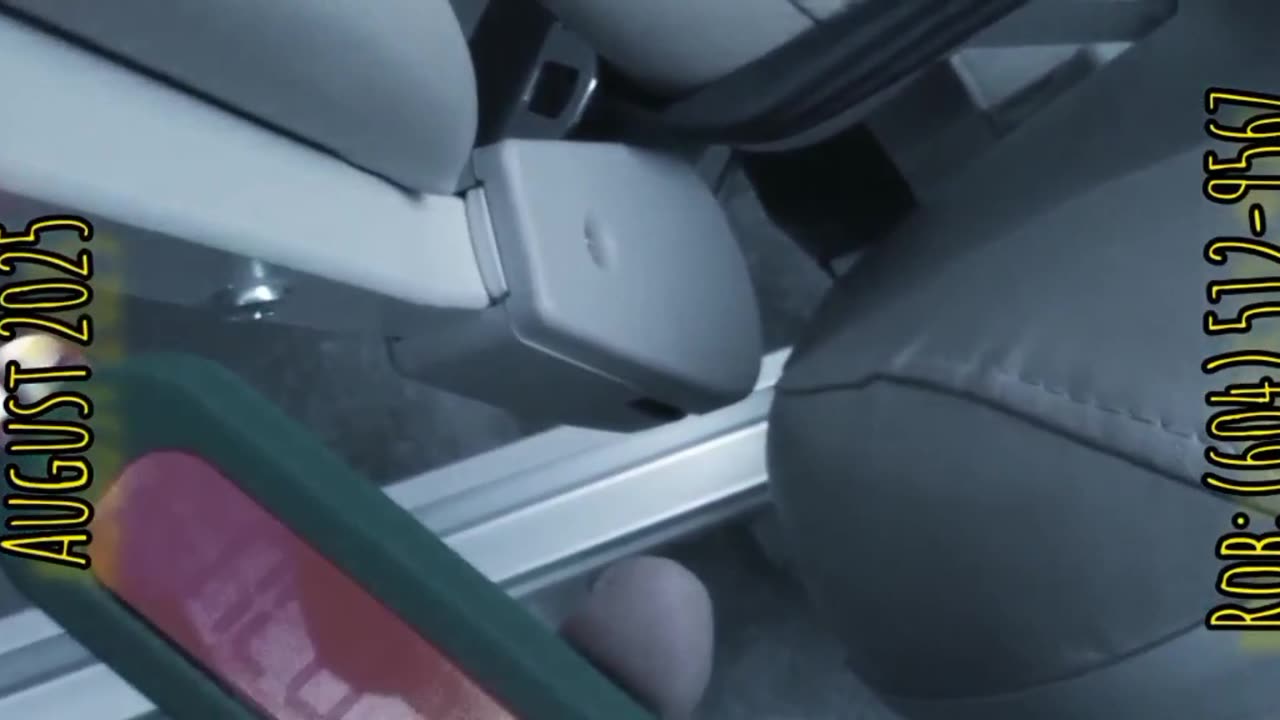Premium Only Content

NOTICE TO STAKEHOLDERS IN HEALTHCARE, ELECTRICAL SAFETY, AND HOME MEDICAL DEVICE USE
**URGENT SAFETY ALERT – FIRST OF ITS KIND NOTICE TO STAKEHOLDERS IN HEALTHCARE, ELECTRICAL SAFETY, AND HOME MEDICAL DEVICE USE**
This is a first-of-its-kind public safety alert issued in the interest of public health, electrical safety, and legal accountability. The findings detailed below represent a critical, under-recognized hazard affecting home medical devices, patient safety, caregiver well-being, and long-term liability for multiple sectors.
---
**TO: Provincial and Municipal Authorities, Electrical Safety Regulators (ESA, BC Safety Authority), Health Canada, Medical Device Regulatory Bodies, Home Care Providers, Insurance Industry Stakeholders, Patients, and Caregivers**
A growing and potentially life-threatening electrical safety crisis has been identified in residential environments across Surrey, Vancouver, and Burnaby, British Columbia. Independent field testing conducted by Rob's Worldwide Stairlift Repairs has revealed systemic electrical deficiencies in household outlets—deficiencies that violate both the *Canadian Electrical Code (CEC)* and *IEEE standards* for safe wiring resistance and voltage integrity.
These findings are not isolated. Every home surveyed to date has at least one outlet failing to meet basic electrical safety standards. Of particular concern is the progressive degradation of wiring resistance over time, which increases the risk of stray voltage, AC ripple, and ground faults—conditions invisible to occupants but potentially lethal when interacting with Class 2 medical devices.
---
**CRITICAL INCIDENT: TECHNICIAN SHOCKED DURING STAIRLIFT REMOVAL**
On a recent service call, Amir, a certified technician at Rob's Worldwide Stairlift Repairs, received a severe electrical shock while removing a Bruno® stairlift. Instrumented diagnostics confirmed the presence of **stray voltage and excessive AC ripple** on the circuit. Notably, Amir was perspiring—a condition that can reduce skin resistance and amplify current flow by up to **100 times**, significantly increasing the risk of injury or cardiac arrest. The following day, Amir exhibited neurological and cognitive symptoms consistent with electrical injury, indicating possible subclinical trauma.
This incident is not merely a workplace safety issue—it is a sentinel event pointing to a broader, unregulated public health hazard.
---
**RISK TO MEDICAL DEVICES AND PATIENTS**
Class 2 medical devices—including patient lifts and stairlifts such as Acorn models—are increasingly deployed in homes with deteriorating or non-compliant electrical infrastructure. These devices often use **2-prong, non-grounded (Class II) plugs**, which offer no path to ground in the event of internal insulation failure or circuit contamination.
When operated on compromised circuits exhibiting:
- Elevated wiring resistance
- Voltage drop beyond manufacturer specifications
- Stray voltage or AC ripple
…these devices can become **energized on external surfaces**, transforming them into sources of chronic micro-electrocution or sudden lethal shock—especially when metal surfaces are unpainted or uninsulated.
Unlike 3-prong grounded medical equipment, 2-prong devices lack protection against ground faults. Over time, as home wiring degrades due to age, poor installation, or environmental stress, the risk escalates silently.
---
**LEGAL AND INSURANCE IMPLICATIONS**
Homes with non-compliant electrical systems may void the operational certification of medical devices. More critically, the use of such devices on substandard power may invalidate **home insurance policies** and **liability coverage**.
Legal precedent exists: in *Whiten v. Pilot Insurance Co.*, the Supreme Court of Canada addressed bad faith denial of claims, but insurers are increasingly scrutinizing underlying conditions. If a fire or injury is traced to non-compliant electrical systems or improperly powered medical devices, **insurers may deny claims** for home fires, e-bike incidents, or EV charging events—not only on technical grounds but as a matter of policy enforcement.
Furthermore, **municipalities and certifying authorities** may face liability for negligence if they permit occupancy or approve installations without verifying electrical safety compliance—especially where medical equipment is in use.
---
**CALL TO ACTION**
1. **Electrical Regulators (BCSA, ESA):** Launch an immediate review of residential electrical safety in homes equipped with medical mobility devices. Prioritize audits in high-density senior and disability-support housing.
2. **Healthcare Providers & Home Care Agencies:** Require electrical safety certification before prescribing or installing any plug-in Class 2 medical device. Treat electrical integrity as a clinical safety prerequisite.
3. **Patients and Caregivers:** Do not assume your outlets are safe. Have all outlets used for medical devices tested by a qualified electrician using calibrated instruments for resistance, voltage drop, stray voltage, and AC ripple.
4. **Manufacturers (Acorn, Bruno ®, etc.):** Re-evaluate the safety of 2-prong Class II designs in aging residential infrastructure. Issue safety advisories and consider retrofit programs or grounding adapters with isolation monitoring.
5. **Municipalities and Building Inspectors:** Update inspection protocols to include electrical safety verification for homes with registered medical device use. Document compliance as part of occupancy permits.
---
**THIS IS NOT A THEORETICAL RISK. IT IS OCCURRING NOW.**
Silent electrical faults are endangering vulnerable populations. The combination of aging infrastructure, inadequate oversight, and ungrounded medical devices creates a perfect storm for preventable harm.
**Immediate reporting and intervention are required.**
For technical inquiries or emergency testing coordination, contact:
**Text: (604) 512-9567**
Rob's Worldwide Stairlift Repairs – Independent Safety Advocacy Division
—
*Note: This alert is based on empirical field data and represents the first known public warning of this specific, multi-system risk convergence in residential medical device safety.*
Rob's alerts are required by Napoleonic Code jurisdictions.
-
 9:05
9:05
Millionaire Mentor
14 hours agoTrump EXPOSES Obama and Biden LIVE As Jim Jordan Backs Him Up
3.36K5 -
 1:34
1:34
WildCreatures
1 day ago $3.92 earnedMajestic Spotted Eagle Rays Fly Past Scuba Diver in the Galapagos Islands
4.91K5 -
 LIVE
LIVE
BEK TV
22 hours agoTrent Loos in the Morning - 10/28/2025
183 watching -
 32:13
32:13
Stephen Gardner
13 hours ago🔥Schumer SHUTDOWN Backfires as Trump CRUSHES Democrats!!
49K22 -
 30:24
30:24
Liberty Hangout
7 days agoNo Kings Protestors Go CRAZY: Part 1
46.9K77 -
 42:08
42:08
The Why Files
2 days agoLincoln Conspiracy: a Diary, a Mummy and The Escape of John Wilkes Booth
30.7K32 -
 24:42
24:42
James Klüg
3 days agoAnti-Trump Protester HITS Grandma Thinking She’s With Us
22.8K18 -
 2:18:46
2:18:46
Tucker Carlson
12 hours agoTucker Carlson Interviews Nick Fuentes
183K673 -
 2:06:42
2:06:42
FreshandFit
13 hours agoCharleston White Addresses The Backlash From His Charlie Kirk Comments
359K91 -
 1:34:52
1:34:52
Badlands Media
17 hours agoBaseless Conspiracies Ep. 156: The ADL Files – Spies, Lies & the Leo Frank Legacy
101K42